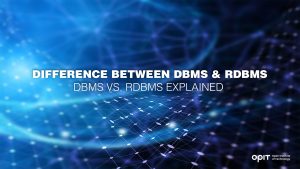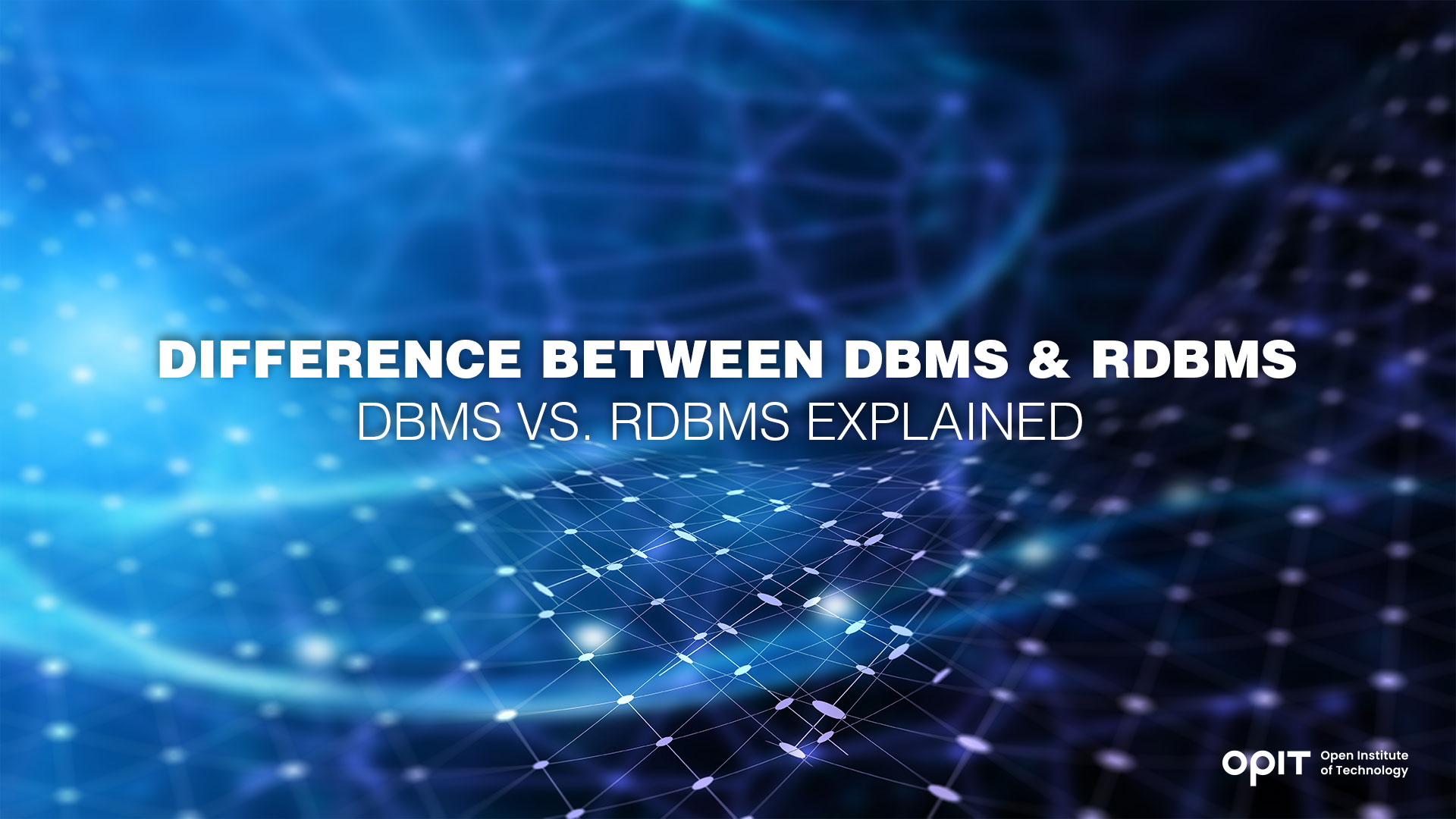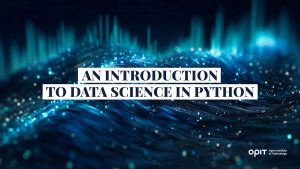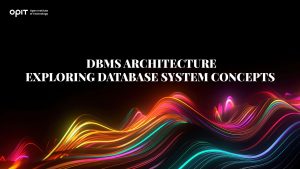

Thanks to many technological marvels of our era, we’ve moved from writing important documents using pen and paper to storing them digitally.
Database systems emerged as the amount and complexity of information we need to keep have increased significantly in the last decades. They represent virtual warehouses for storing documents. Database management systems (DBMS) and relational database management systems (RDBMS) were born out of a burning need to easily control, organize, and edit databases.
Both DBMS and RDBMS represent programs for managing databases. But besides the one letter in the acronym, the two terms differ in several important aspects.
Here, we’ll outline the difference between DBMS and RDBMS, help you learn the ins and outs of both, and choose the most appropriate one.
Definition of DBMS (Database Management Systems)
While working for General Electric during the 1960s, Charles W. Bachman recognized the importance of proper document management and found that the solutions available at the time weren’t good enough. He did his research and came up with a database management system, a program that made storing, editing, and retrieving files a breeze. Unknowingly, Bachman revolutionized the industry and offered the world a convenient database management solution with amazing properties.
Key Features
Over the years, DBMSs have become powerful beasts that allow you to enhance performance and efficiency, save time, and handle huge amounts of data with ease.
One of the key features of DBMSs is that they store information as files in one of two forms: hierarchical or navigational. When managing data, users can use one of several manipulation functions the systems offer:
- Inserting data
- Deleting data
- Updating data
DBMSs are simple structures ideal for smaller companies that don’t deal with huge amounts of data. Only a single user can handle information, which can be a deal-breaker for larger entities.
Although fairly simple, DBMSs bring a lot to the table. They allow you to access, edit, and share data in the blink of an eye. Moreover, DBMSs let you unify your team and have accurate and reliable information on the record, ensuring nobody is left out. They also help you stay compliant with different security and privacy regulations and lower the risk of violations. Finally, having an efficient database management system leads to wiser decision-making that can ultimately save you a lot of time and money.
Examples of Popular DBMS Software
When DBMSs were just becoming a thing, you had software like Clipper and FoxPro. Today, the most popular (and simplest) examples of DBMS software are XML, Windows Registry, and file systems.
Definition of RDBMS (Relational Database Management Systems)
Not long after DBMS came into being, people recognized the need to keep data in the form of tables. They figured storing info in rows (tuples) and columns (attributes) allows a clearer view and easier navigation and information retrieval. This idea led to the birth of relational database management systems (RDBMS) in the 1970s.
Key Features
As mentioned, the only way RDBMSs store information is in the form of tables. Many love this feature because it makes organizing and classifying data according to different criteria a piece of cake. Many companies that use RDBMSs utilize multiple tables to store their data, and sometimes, the information in them can overlap. Fortunately, RDBMSs allow relating data from various tables to one another (hence the name). Thanks to this, you’ll have no trouble adding the necessary info in the right tables and moving it around as necessary.
Since you can relate different pieces of information from your tables to each other, you can achieve normalization. However, normalization isn’t the process of making your table normal. It’s a way of organizing information to remove redundancy and enhance data integrity.
In this technological day and age, we see data growing exponentially. If you’re working with RDBMSs, there’s no need to be concerned. The systems can handle vast amounts of information and offer exceptional speed and total control. Best of all, multiple users can access RDBMSs at a time and enhance your team’s efficiency, productivity, and collaboration.
Simply put, an RDBMS is a more advanced, powerful, and versatile version of DBMS. It offers speed, plenty of convenient features, and ease of use.
Examples of Popular RDBMS Software
As more and more companies recognize the advantages of using RDBMS, the availability of software grows by the day. Those who have tried several options agree that Oracle and MySQL are among the best choices.
Key Differences Between DBMS and RDBMS
Now that you’ve learned more about DBMS and RDBMS, you probably have an idea of the most significant differences between them. Here, we’ll summarize the key DBMS vs. RDBMS differences.
Data Storage and Organization
The first DBMS and RDBMS difference we’ll analyze is the way in which the systems store and organize information. With DBMS, data is stored and organized as files. This system uses either a hierarchical or navigational form to arrange the information. With DBMS, you can access only one element at a time, which can lead to slower processing.
On the other hand, RDBMS uses tables to store and display information. The data featured in several tables can be related to each other for ease of use and better organization. If you want to access multiple elements at the same time, you can; there are no constraints regarding this, as opposed to DBMS.
Data Integrity and Consistency
When discussing data integrity and consistency, it’s necessary to explain the concept of constraints in DBMS and RDBMS. Constraints are sets of “criteria” applied to data and/or operations within a system. When constraints are in place, only specific types of information can be displayed, and only specific operations can be completed. Sounds restricting, doesn’t it? The entire idea behind constraints is to enhance the integrity, consistency, and correctness of data displayed within a database.
DBMS lacks constraints. Hence, there’s no guarantee the data within this system is consistent or correct. Since there are no constraints, the risk of errors is higher.
RDBMS have constraints, resulting in the reliability and integrity of the data. Plus, normalization (removing redundancies) is another option that contributes to data integrity in RDBMS. Unfortunately, normalization can’t be achieved in DBMS.
Query Language and Data Manipulation
DBMS uses multiple query languages to manipulate data. However, none of these languages offer the speed and convenience present in RDBMS.
RDBMS manipulates data with structured query language (SQL). This language lets you retrieve, create, insert, or drop data within your relational database without difficulty.
Scalability and Performance
If you have a small company and/or don’t need to deal with vast amounts of data, a DBMS can be the way to go. But keep in mind that a DBMS can only be accessed by one person at a time. Plus, there’s no option to access more than one element at once.
With RDBMSs, scalability and performance are moved to a new level. An RDBMS can handle large amounts of information in a jiff. It also supports multiple users and allows you to access several elements simultaneously, thus enhancing your efficiency. This makes RDBMSs excellent for larger companies that work with large quantities of data.
Security and Access Control
Last but not least, an important difference between DBMS and RDBMS lies in security and access control. DBMSs have basic security features. Therefore, there’s a higher chance of breaches and data theft.
RDBMSs have various security measures in place that keep your data safe at all times.
Choosing the Right Database Management System
The first criterion that will help you make the right call is your project’s size and complexity. Small projects with relatively simple data are ideal for DBMSs. But if you’re tackling a lot of complex data, RDBMSs are the logical option.
Next, consider your budget and resources. Since they’re simpler, DBMSs are more affordable, in both aspects. RDBMSs are more complex, so naturally, the price of software is higher.
Finally, the factor that affects what option is the best for you is the desired functionality. What do you want from the program? Is it robust features or a simple environment with a few basic options? Your answer will guide you in the right direction.
Pros and Cons of DBMS and RDBMS
DBMS
Pros:
- Doesn’t involve complex query processing
- Cost-effective solution
- Ideal for processing small data
- Easy data handling via basic SQL queries
Cons:
- Doesn’t allow accessing multiple elements at once
- No way to relate data
- Doesn’t inherently support normalization
- Higher risk of security breaches
- Single-user system
RDBMS
Pros:
- Advanced, robust, and well-organized
- Ideal for large quantities of information
- Data from multiple tables can be related
- Multi-user system
- Supports normalization
Cons:
- More expensive
- Complex for some people
Examples of Use Cases
DBMS
DBMS is used in many sectors where more basic storing and management of data is required, be it sales and marketing, education, banking, or online shopping. For instance, universities use DBMS to store student-related data, such as registration details, fees paid, attendance, exam results, etc. Libraries use it to manage the records of thousands of books.
RDBMS
RDBMS is used in many industries today, especially those continuously requiring processing and storing large volumes of data. For instance, Airline companies utilize RDBMS for passenger and flight-related information and schedules. Human Resource departments use RDBMS to store and manage information related to employees and their payroll statistics. Manufacturers around the globe use RDBMS for operational data, inventory management and supply chain information.
Choose the Best Solution
An RDBM is a more advanced and powerful younger sibling of a DBMS. While the former offers more features, convenience, and the freedom to manipulate data as you please, it isn’t always the right solution. When deciding which road to take, prioritize your needs.
Related posts

Life is unpredictable. While many of us have specific hopes and expectations of how our futures will turn out, things don’t always go as expected. There are many variables and unexpected incidents that can interfere and force you to alter your plans, and this is particularly true when it comes to education.
For instance, you might have had plans to study a specific subject, but had to deviate from those plans due to unforeseen circumstances. Or you may have had to enter the workforce in an occupation different from the one you sought in an effort to earn an income, a move that may not provide you with the time or opportunity to achieve your desired educational aims.
In short, every individual’s career pathway is different, and very few go exactly as we expect from the outset. Fortunately, even if you experience a few false starts or sudden twists in your pathway, there are always options available to help you get back on track.
The Unpredictable Nature of Education
In theory, the educational process seems simple. You select a course of study that interests you from the vast array of subjects and prospective professions, select the appropriate classes, acquire the knowledge and skills you need to succeed, and then embark on your profession.
In reality, however, as many people know from firsthand experience, the road to education is often far from straightforward. Here are just some of the many challenges that can take your educational path in a completely different direction:
- Life’s Curveballs: As touched on in the introduction, life is impossible to predict. Financial hardships, health issues, and family emergencies are just some of the unfortunate occurrences that might derail even the most perfectly planned educational regime.
- Changing Interests: People’s desires and preferences don’t necessarily stay the same throughout their entire lives. As you grow, learn, and have new experiences, your interests may change, and so, too, may your educational objectives.
- Pressure and Burnout: Some academic paths are particularly challenging, demanding intense levels of study and hard work. This can sometimes prove too much to bear, even for the most resilient students.
- Failures and Setbacks: Conventional education largely builds around tests and examinations, requiring students to demonstrate their competencies repeatedly. It’s a system that doesn’t suit everyone, and test failures can lead to setbacks and delays.
- Inequality: People can be born with very different privileges and levels of access to education. Those in certain parts of the world may find it much more challenging to complete their education path for financial, cultural, or even political reasons.
- Late Bloomers: People develop at different paces. Some may struggle educationally early on in their lives, forcing them to make certain concessions or sacrifices related to their studies, only to find their feet later in life once they’ve entered the world of work.
Whether you’re a late bloomer, have had your educational aspirations delayed by personal problems, desire to learn new skills and try something different, or want to begin a fresh chapter in your professional life, the Open Institute of Technology (OPIT) may be able to help.
Introducing OPIT
OPIT is an online teaching platform, making high-level technological educational programs accessible to all, no matter their age or background. Offering education in fields like computer science, artificial intelligence, and digital business, OPIT provides a curated collection of degrees. In addition, they offer classes taught by world-leading tutors imparting the wisdom and skills students need to achieve their goals and become the tech leaders of tomorrow.
Meanwhile, for those who have had somewhat tumultuous or unpredictable educational paths, OPIT offers the perfect course corrector: the OPIT Foundation Year.
The OPIT Foundation Year
OPIT’s Foundation Year is a Pre-Tertiary Certificate in Information Technology, fully aligned with MQF/EQF Level 4 standards and valued at 60 ECTS credits. Lasting just one year, this program essentially serves as a comprehensive yet accessible springboard towards higher-level education, creating a path towards degrees and careers in dynamic, flexible fields, like computer science and digital business.
Like other OPIT programs, the Foundation Year is delivered entirely online via the OPIT Virtual Learning Environment. Combining live lectures, asynchronous content, and interactive assessments, students enjoy diverse and dynamic study experiences, acquiring core skills like academic writing, mathematics, and computer literacy, and building a bedrock of knowledge and confidence before taking their next steps.
Who Is the Foundation Program For?
The Foundation Program is designed to provide a solid base upon which to build the technological education many students need. It’s the perfect choice for those who are eager and ambitious to enter professions in AI, data science, and computing, but don’t feel that they have the necessary core skills and knowledge needed to dive straight into a degree.
Entry requirements are relatively relaxed in order to allow as many students as possible to enjoy the benefits of this program. With that said, applicants should ideally hold an MQF/EQF Level 3 or equivalent qualification, with the intention of pursuing a bachelor’s degree. A minimum of B2 level of English proficiency is also required, as this is the working and studying language of the institution.
What the Foundation Year Provides
Perhaps you’ve recently graduated, are considering a career change, or finally have the opportunity to return to education after initial delays or unexpected disruptions to your original plans. Either way, the Foundation Year can help you enjoy:
- Greater Self-Confidence: Foundation Year graduates gain the fundamental skills they need to enter degree programs with much more self-belief and assuredness.
- Superior Tech Knowledge: Lasting two terms, this course explores mathematics, academic reading and writing, and provides an introduction to computer hardware and software.
- Foundational Mathematics: Mathematics literacy forms a large part of the study focus for the Foundation Year, helping students feel more comfortable with numbers and formulas.
- Flexible Learning: Unlike more rigid, conventional education environments, OPIT gives you the freedom and flexibility to study at a pace that suits you best, all from the comfort of home.
- Global Community: OPIT is an international institution, with staff and students from all around the world eager to share knowledge, exchange ideas, and help one another.
Take Your Next Steps to Success With the OPIT Foundation Year
If you’re curious about a career in technology or have always wanted to work with AI, data, and computers, but struggled to find the time and opportunities you need to acquire relevant skills and knowledge, the Foundation Program was made for people like you.
It’s the ideal entry point into the exciting world of online education, and the perfect first step towards a prestigious degree from an innovative and increasingly successful institution. Download the brochure to learn more about it, or start your online application, today.

Students today have a broader range of fields of study to choose from than ever before, but with the world becoming increasingly technological and computers increasing in influence and importance, pursuing a career in computer science often proves a smart, strategic choice.
There are numerous benefits and career paths associated with studying and working in computer science, and we’ll be listing just a few of them in this guide.
High Average Salaries
With the rising cost of living in many parts of the world, it’s unsurprising that many students are thinking several decades ahead to determine what level of starting salaries they could obtain in different career fields.
Many are also seeking professions that offer the opportunity for growth and the ability to advance up the ranks over time, thus increasing their salary and their quality of life in the process.
If a strong, stable salary with the opportunity for improved income is one of your top career priorities, computer science should be at or near the top of your list of prospective careers.
According to recent data, computer scientists earn an average of over €65,000 per year, with certain jobs, like IT project leader and data scientist, paying ever higher. Starting salaries are strong, too, with graduates earning anywhere from €46,000 to €60,000, depending on their chosen profession and level of qualifications.
There are similarly high average salaries reported around the world in computer science and related fields such as data science and AI/ML engineering. These numbers are projected to increase in the years to come, pointing to computer science as a way for graduates to get off to the best financial start of any career.
Unrivaled Flexibility
A common problem with some subjects and courses is that they only provide graduates with a narrow set of skills and a similarly narrow range of potential professions to which they can apply those skills.
That’s not the case with computer science. Graduates in this field can enjoy instant access to a remarkably diverse array of career opportunities, with even newer opportunities being created all the time as technology evolves and innovations emerge.
A few of the many industries and roles you might choose to enter in the field of computer science include:
- Healthcare: As a software developer, data analyst, or cybersecurity expert
- Finance: As a fintech engineer, blockchain developer, or security analyst
- Media: As a graphics programmer, AI developer, or game developer
- Education: As an analyst, software developer, or machine learning engineer
Guaranteed Opportunities
Some career paths are more limited than others, with relatively low numbers of opportunities, recurring risks of job loss, or difficulty obtaining employment in the first place.
Again, with computer science, this simply isn’t the case. At a time when 75% of companies plan to embrace AI and other technologies by 2027, and businesses of all sizes and industries are now relying on computers more than ever before, computer science graduates can enjoy almost unbeatable job security.
Opportunities will continue to grow for people with good computing knowledge, whether that be in the obvious fields like software and web development, engineering, and AI development, or more niche sectors.
With so many options, you’re effectively guaranteed a long, rewarding career if you put in the necessary time and effort needed to establish a strong foundation of computing skills.
Rapidly Expanding and Evolving Industries
It’s no secret that the world of technology is a dynamic and fast-moving one. In the past 20 years alone, we’ve seen the proliferation of the internet, the rapid advancement of smartphones and wearable devices, the emergence of AI, and so much more.
In the years ahead, engineers and developers will continue to explore the boundaries of modern technology’s powers and potential, driving new innovations and improvements and opening more exciting job opportunities for those already established and experienced in this field.
Getting into computer science now could therefore provide a solid foundation for a career filled with excitement as you uncover and explore new ways of working with computers in fields as diverse as healthcare, finance, education, entertainment, manufacturing, logistics, and beyond.
Start Your Computer Science Career at OPIT
We’ve discussed some of the many benefits associated with careers in computer science, from the high starting salaries to the rapidly growing array of job options available to graduates. By now, you may be eager to follow this particular career path and take advantage of the wealth of opportunities.
If you’re wondering how to start, the Open Institute of Technology (OPIT) may hold the answers you need. As an exclusively online learning platform, specializing in computer science and digital business, and staffed by some of the world’s leading tech experts, OPIT is producing the tech leaders of tomorrow.
Some of the many advantages of learning with OPIT include:
- Accessible and flexible online education that matches your learning style and schedule
- Heavy focus on real-world applications of the skills you acquire
- An international community of like-minded students from around the globe
- A top team of tutors and lecturers from varying fields and industries
- Progressive assessment of skills and understanding – not constant exams
OPIT offers a small, curated selection of courses for those seeking to gain the technological skills and knowledge to succeed in their chosen areas of expertise. That includes a BSc (Hons) in Computer Science – a six-term program, worth 180 ECTS credits.
Numerous IT industry leaders and experts helped develop this fully accredited undergraduate degree, which is online and accessible to all. Like other OPIT courses, it offers a flexible learning program, with progressive assessments, fast-track options, and the opportunity to be part of a growing community of learners and tutors.
If the benefits of doing a career in computer science interest you, download the OPIT BSc in Computer Science brochure or fill out an online application today and take your first step toward a rewarding and fulfilling profession.
Have questions?
Visit our FAQ page or get in touch with us!
Write us at +39 335 576 0263
Get in touch at hello@opit.com
Talk to one of our Study Advisors
We are international
We can speak in:


